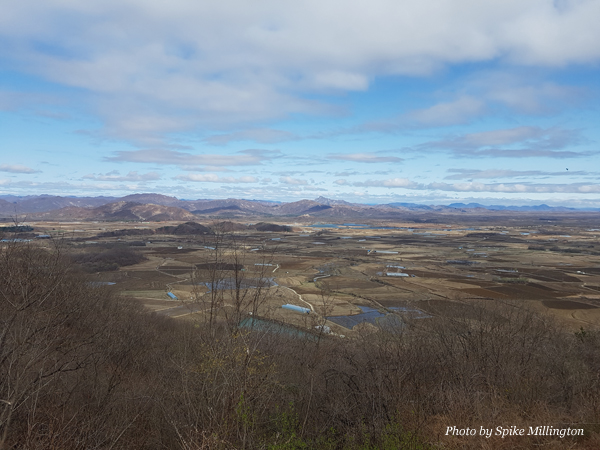
The Cheorwon Plain, located south of the Demilitarized Zone in South Korea, is an important staging and wintering area for Red-crowned and White-naped Cranes in East Asia.
The Demilitarized Zone (DMZ) marking the border between North and South Korea has recently been in the news as the site of the historic meeting between the presidents of those two countries, preceding the arguably even more historic Kim–Trump summit in Singapore. While the DMZ, a natural refuge between the two countries, has become more forested in recent years as a result of an agreement to limit the risk of forest fires, the fertile Cheorwon Plain immediately south of the DMZ in South Korea has become increasingly important as a staging and wintering area for thousands of cranes.
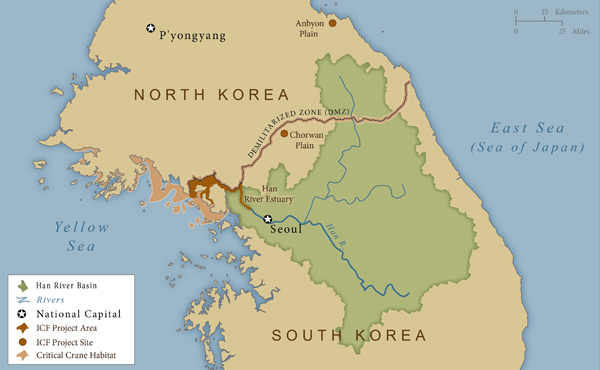
While up to eight crane species have been seen in a single day, the area is most important as the wintering area for the entire Eastern Flyway population of the endangered Red-crowned Crane, over 1,000 individuals, and as a staging and wintering area for over 4,000 White-naped Cranes. Although the Western Flyway populations of these species are declining in China, the Eastern Flyway numbers remain stable. However, the crane sites in Cheorwon, which depend largely on traditional rice cultivation in the areas, are under threat from a variety of direct and indirect pressures. It seems the cranes are being squeezed into smaller areas than previously, their future becoming more precarious.
In light of the importance of the area and the mounting pressures, I joined with long-time International Crane Foundation collaborator Dr. Lee Kisup, head of the Korea Crane Network, to undertake a visit to Cheorwon and neighboring areas in early April 2018 to assess the possibility of developing an International Crane Foundation program in the region.
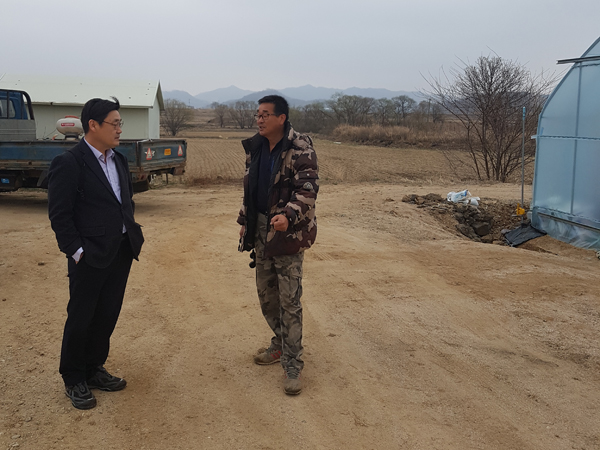
Dr. Lee Kisup with local farmer Mr. Choi discuss crane conservation in Cheorwon.
The DMZ is bordered by a limited-access Civilian Controlled Zone (CCZ) and it is in this area that most of the cranes are found. Of course, by early April the cranes have already returned north, and we saw only a dozen White-naped Cranes and a pair of Hooded Cranes. What we did see was increasing encroachment on rice-farming areas by commercial greenhouses, ginseng production and other infrastructure, partly as a result of areas of the CCZ being opened up to local people. Much of the land in Cheorwon is owned by people living outside the area, often from as far away as the capital, Seoul. Land prices are cheaper here, and we heard plans for greater investment, including chicken farms. Local government is generally focused on increasing economic opportunities for local inhabitants.
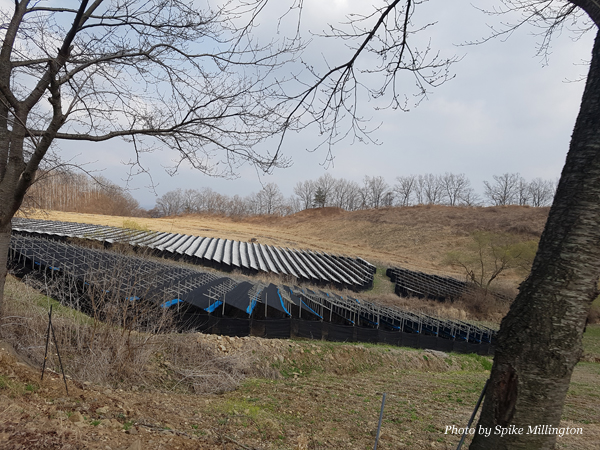
Ginseng cultivation in Yeoncheong, South Korea.
There are encouraging signs. Some farmers greatly value the cranes and farm the rice fields in traditional ways, so that cranes can feed on leftover grains in the autumn and winter. In addition, a local nongovernmental organization is developing tourism based on roosting and feeding cranes as the birds concentrate at sites along the Hantan river, attracted by supplemental feeding, which offers great viewing and photography opportunities. In our discussions with local leaders, they remain appreciative of the cranes, especially in relation to tourism opportunities, and the Cheorwon local government has established a Crane Conservation Committee. We hope to build on these opportunities and follow up this visit with a stakeholder meeting in Cheorwon later in 2018 to seek support for a potential program in the region.
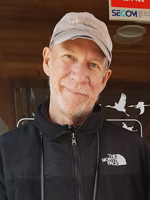 Story submitted by Spike Millington, Vice President International – Asia. Click here to learn more about our work in East Asia.
Story submitted by Spike Millington, Vice President International – Asia. Click here to learn more about our work in East Asia.
